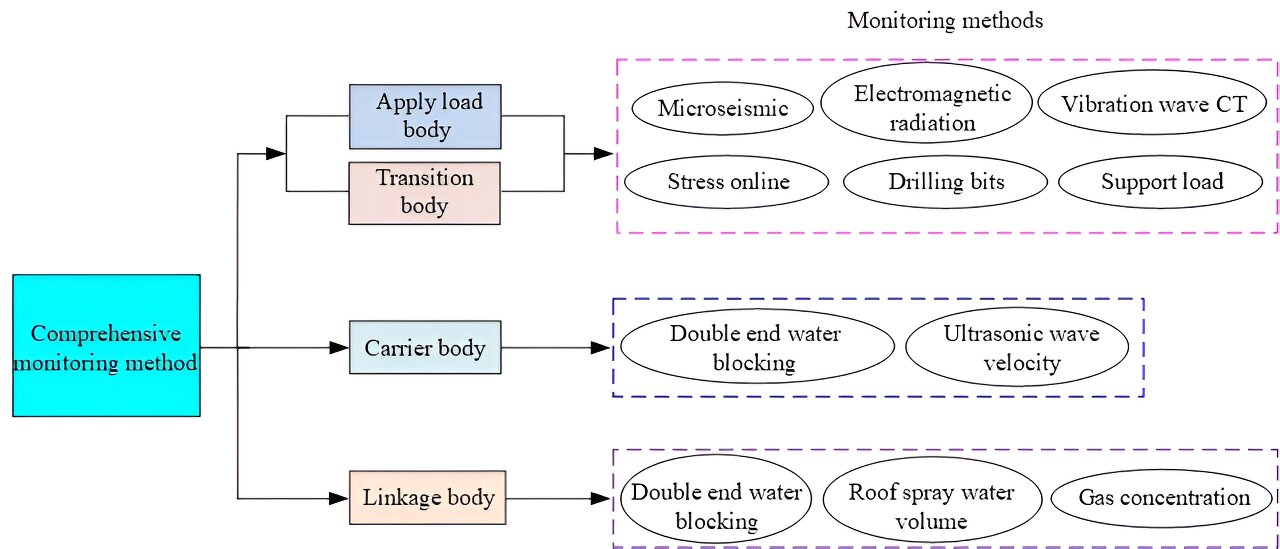by KeAi Communications Co.
A large number of coal pillars were left behind during the mining of multi-coal seams. These pillars, when unstable, pose significant risks during both production and well closure stages in coal mines. Their failure can exert intense dynamic pressure on lower coal seams, resulting in substantial deformation and damage to support structures and mining tunnels.
In extreme cases, such instability can trigger disasters like mine earthquakes and widespread collapse of goaf areas, potentially leading to casualties. Therefore, it is necessary to carry out monitoring and evaluation research on the risk of instability and disaster caused by the linkage of residual coal pillars and rock strata.
The challenge of instability linkage between residual coal pillars and rock strata is complex, as it not only involves the interaction between these pillars and strata but also engenders a cascade of linkage disasters. Present research efforts mostly lack a holistic assessment of the instability and disaster risks arising from the interaction between residual coal pillars and rock strata in multi-coal seam mining.
To that end, a group of researchers from China established a comprehensive monitoring and evaluation of disaster risk caused by linkage failure and instability of residual coal pillar and rock strata in multi-coal seam mining. In brief, they reported:
- The instability of residual coal pillar-rock strata is characterized by shallow burial depths, concentrated beneath overlying coal seams, and manifests through various mine pressure forms, including support bending and roof collapse, sometimes leading to surface damage;
- Monitoring of residual coal pillar-rock strata instability requires attention to fracture development height in addition to other components. A comprehensive monitoring approach is devised to address diverse monitoring needs;
- Key evaluation indices such as microseismic energy and crack development height are identified for assessing coal pillar-rock strata linkage instability. A quantitative evaluation method using fuzzy comprehensive evaluation is introduced; and
- Using fuzzy comprehensive evaluation, the medium-risk level of disaster stemming from coal pillar-rock strata linkage instability in the 307-panel area during multi-seam mining is assessed. Pressure relief techniques like blasting are effective in reducing stress, validating the accuracy of risk assessment.
“Our study serves as a resource for studying and evaluating the disaster risk stemming from the linkage instability of residual coal pillar-rock strata in multi-seam mining,” notes first author Qing Ma. “Furthermore, the findings offer insights that can be applied to assess the stability and risk associated with residual coal pillar-rock formations post-CO2 injection in closed or abandoned mines.”
The findings are published in the journal Geohazard Mechanics.
“Nevertheless, it is essential to customize the application of these findings to suit the specific production and geological conditions of individual mines, necessitating certain adjustments during implementation,” adds Ma.
More information:
Qing Ma et al, Monitoring and evaluation of disaster risk caused by linkage failure and instability of residual coal pillar and rock strata in multi-coal seam mining, Geohazard Mechanics (2023). DOI: 10.1016/j.ghm.2023.11.001
Provided by
KeAi Communications Co.
Citation:
A comprehensive monitoring and evaluation of disaster risk due to linkage of residual coal pillars and rock strata (2024, April 22)
retrieved 23 April 2024
from https://phys.org/news/2024-04-comprehensive-disaster-due-linkage-residual.html
This document is subject to copyright. Apart from any fair dealing for the purpose of private study or research, no
part may be reproduced without the written permission. The content is provided for information purposes only.

